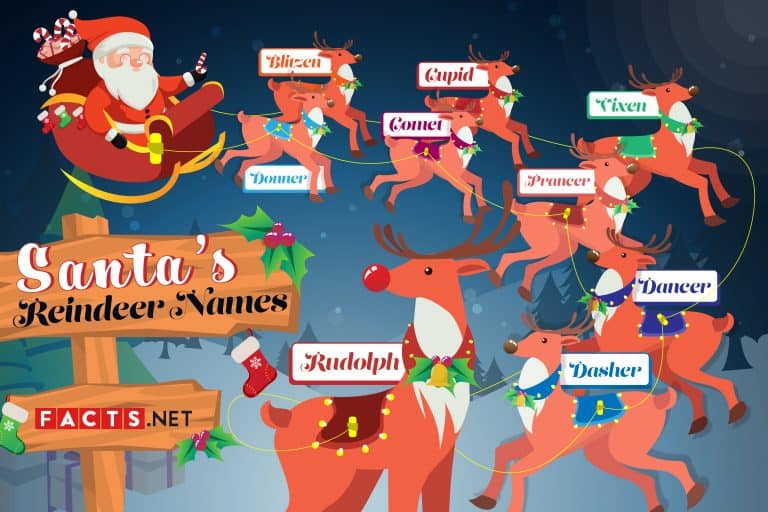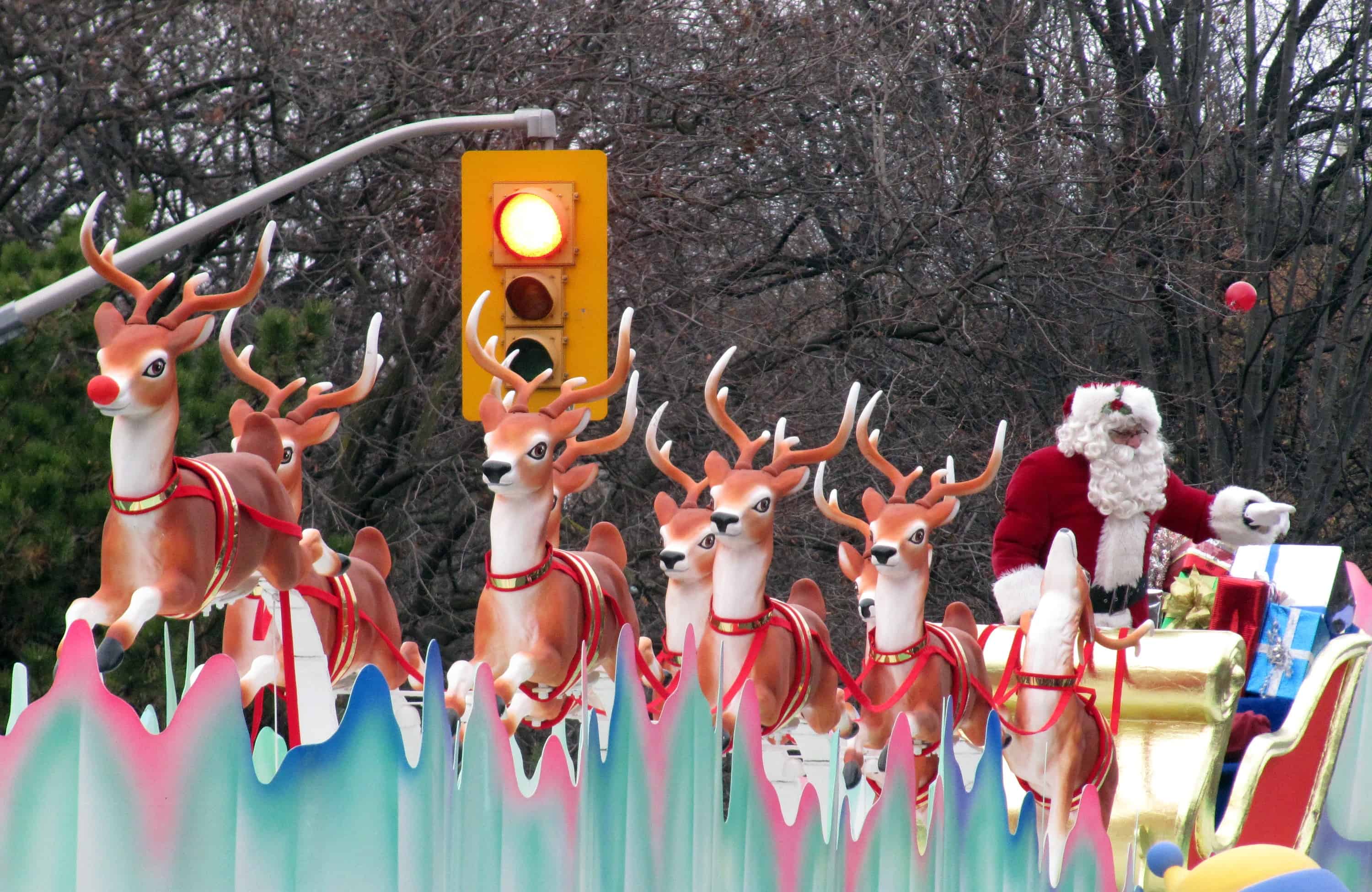Santa's reindeer names have become a beloved part of Christmas tradition worldwide. These magical creatures, known for their ability to fly and pull Santa's sleigh on Christmas Eve, have captured the hearts of children and adults alike. From Rudolph's glowing red nose to Blitzen's lightning-fast speed, each reindeer has a unique story that adds to the charm of the holiday season. Understanding the origins and significance of Santa's reindeer names can deepen our appreciation for this timeless tradition.
The history of Santa's reindeer dates back to the early 19th century when they were first mentioned in literature. Since then, these mythical animals have become integral to the celebration of Christmas. Their names, each carefully chosen, reflect their personalities and roles in Santa's grand journey. This article will delve into the fascinating world of Santa's reindeer, exploring their names, origins, and the cultural significance they hold.
As we explore the topic of Santa's reindeer names, we will also uncover interesting facts and trivia about these enchanting creatures. By the end of this article, you'll have a deeper understanding of why Santa's reindeer are so special and how they contribute to the magic of Christmas. Let's dive in!
Read also:How Old Is Dwayne Johnson A Comprehensive Guide To The Life And Career Of The Rock
Table of Contents
- The History of Santa's Reindeer Names
- List of Santa's Reindeer Names
- Origins and Meanings of the Names
- Rudolph: The Most Famous Reindeer
- Cultural Impact of Santa's Reindeer
- Reindeer in Christmas Traditions
- Mythology Behind Santa's Reindeer
- Fun Facts About Santa's Reindeer
- Reindeer in Literature and Media
- Conclusion and Final Thoughts
The History of Santa's Reindeer Names
The tradition of Santa's reindeer began in 1823 with the publication of the poem "A Visit from St. Nicholas," commonly known as "'Twas the Night Before Christmas." Written by Clement Clarke Moore, this poem introduced the world to Santa's eight flying reindeer for the first time. Each reindeer was given a name, which has since become an integral part of Christmas lore.
Before this poem, there were no specific references to Santa using reindeer to deliver presents. The idea of reindeer pulling a sleigh was revolutionary at the time, blending elements of Nordic mythology with the burgeoning American Christmas tradition. This historical context helps us understand why these names have become so iconic.
Evolution of Santa's Reindeer in Popular Culture
Over the years, the portrayal of Santa's reindeer has evolved. From the original eight reindeer mentioned in Moore's poem to the addition of Rudolph in the mid-20th century, the reindeer team has grown and changed with the times. This evolution reflects broader cultural shifts and the enduring popularity of Christmas stories.
List of Santa's Reindeer Names
Santa's reindeer team consists of nine members, each with a unique name:
- Dasher
- Dancer
- Prancer
- Vixen
- Comet
- Cupid
- Donner
- Blitzen
- Rudolph
These names are not random but carry deep meanings and historical significance, as we will explore in the following sections.
Read also:When Was The Feast Of Dionysus Painted Unveiling The Origins Of A Timeless Masterpiece
Origins and Meanings of the Names
Each of Santa's reindeer names has a specific origin and meaning. For instance, "Dasher" suggests speed and agility, while "Vixen" evokes a feminine strength and cunning. Understanding the etymology of these names provides insight into the character traits attributed to each reindeer.
Symbolism Behind the Names
Beyond their literal meanings, the names of Santa's reindeer also carry symbolic weight. For example, "Cupid" symbolizes love and affection, while "Blitzen" represents lightning-fast speed. These symbolic meanings enhance the magical aura surrounding Santa's reindeer and their role in delivering joy to children worldwide.
Rudolph: The Most Famous Reindeer
No discussion of Santa's reindeer would be complete without mentioning Rudolph, the most famous of the group. Introduced in a 1939 storybook written by Robert L. May, Rudolph's glowing red nose became a symbol of uniqueness and acceptance. Despite initial teasing, Rudolph's special talent saved the day, making him an integral part of Santa's team.
Rudolph's Legacy
Rudolph's story has inspired countless adaptations in literature, music, and film. His message of embracing individuality and finding strength in diversity resonates with people of all ages. Rudolph's inclusion in the reindeer lineup expanded the narrative of Santa's journey and added a new layer of meaning to the Christmas tradition.
Cultural Impact of Santa's Reindeer
Santa's reindeer have had a profound impact on global culture. From their appearances in holiday movies to their roles in Christmas parades, these mythical creatures have become synonymous with the holiday season. Their names and stories have been translated into countless languages, ensuring their popularity across diverse cultures.
Reindeer in Different Cultures
While the concept of Santa's reindeer originated in Western traditions, similar myths exist in other cultures. For example, in Nordic folklore, reindeer are often associated with winter spirits and magical powers. These cross-cultural connections highlight the universal appeal of Santa's reindeer and their enduring legacy.
Reindeer in Christmas Traditions
Santa's reindeer play a crucial role in many Christmas traditions. From leaving out carrots for the reindeer on Christmas Eve to decorating homes with reindeer-themed ornaments, these creatures are deeply embedded in holiday festivities. Their presence reminds us of the magic and wonder of Christmas, inspiring joy and excitement in people of all ages.
Modern Celebrations Featuring Reindeer
In recent years, reindeer-themed events have gained popularity, including reindeer races, petting zoos, and light displays featuring animated reindeer. These celebrations not only honor the tradition of Santa's reindeer but also provide opportunities for families to create new memories together.
Mythology Behind Santa's Reindeer
The mythology surrounding Santa's reindeer draws from various sources, including Norse legends, Germanic folklore, and Native American traditions. These stories often depict reindeer as powerful, mystical creatures capable of bridging the gap between the earthly and spiritual realms. By incorporating these elements into the Christmas narrative, Santa's reindeer gain an added layer of depth and intrigue.
Mystical Powers of the Reindeer
According to some legends, Santa's reindeer possess extraordinary powers, such as the ability to fly at incredible speeds, navigate through storms, and communicate with one another telepathically. These powers are essential for completing their annual journey around the world, delivering gifts to millions of children in a single night.
Fun Facts About Santa's Reindeer
Here are some interesting facts about Santa's reindeer:
- Rudolph's red nose is believed to glow due to bioluminescence, a natural phenomenon found in certain animals.
- The original poem referred to the eighth reindeer as "Dunder" instead of "Donner," reflecting a Dutch influence on the story.
- Female reindeer, like Vixen, retain their antlers during the winter months, making them well-suited for pulling Santa's sleigh.
- Reindeer are the only deer species in which both males and females grow antlers.
These facts not only make the reindeer more fascinating but also deepen our appreciation for the science behind the magic.
Reindeer in Literature and Media
Santa's reindeer have been featured in countless works of literature and media, from classic poems to modern animated films. These portrayals have helped shape public perception of the reindeer and their roles in the Christmas story. By examining these representations, we can gain a better understanding of how the reindeer have evolved over time.
Notable Adaptations
Some notable adaptations featuring Santa's reindeer include:
- "Rudolph the Red-Nosed Reindeer" (1964 TV special)
- "The Polar Express" (2004 film)
- "Santa Claus Is Comin' to Town" (1970 animated special)
These adaptations have brought the reindeer to life in new and exciting ways, captivating audiences for generations.
Conclusion and Final Thoughts
Santa's reindeer names are more than just words; they are an integral part of the Christmas tradition that has delighted people for nearly two centuries. From their humble beginnings in a 19th-century poem to their starring roles in modern media, these magical creatures continue to inspire wonder and joy. By exploring the history, meanings, and cultural significance of Santa's reindeer names, we gain a deeper appreciation for the magic of Christmas.
We invite you to share your thoughts and experiences with Santa's reindeer in the comments below. Do you have a favorite reindeer or a special memory involving these magical creatures? Let us know! Additionally, feel free to explore other articles on our site for more fascinating insights into the world of Christmas traditions.


